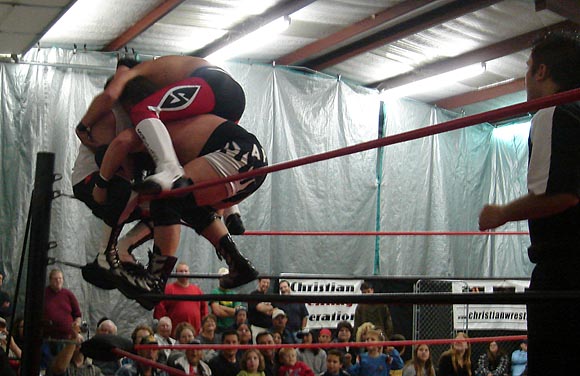View current page
...more recent posts
At the blog of new media artist duo MTAA you can listen to an .mp3 file of artist Marisa Olson "kicking the ass" of MTAA-er T.Whid (as he phrases it). This is the eighth and next-to-last in a series of MTAA's "live at the art opening" online field recordings. It's very entertaining and informative.
In the recording, Olson, who also blogs and makes new media art, coolly, efficiently, and amusingly dispatches T.Whid's leading questions such as:
--Is the 8 Bit movement evolving, since Cory Arcangel is the leader of the movement and his most recent show contained nothing 8 Bit in it?
--Is it a problem that artwork requiring specialized knowledge to appreciate (i.e., Net Art) is on the Web where anyone can consume it in a mass media way?
--Is Net Art devolving into something that can be judged very easily and quickly and rated according to its hit count?
--Isn't it getting harder and harder for Net artists to work in the context of the other Web culture (i.e., popular, amateur) that is steadily growing?
(The above are my paraphrases of the questions. I believe the drift is accurate.)
Update: I characterized the questions as "leading" (stating arguments rather than open-endedly eliciting information) but they are actually more in the nature of "when did you stop beating your wife?" questions (containing more than one assumption the questionee is being asked to assent to or not). Here, for example, are all the assumptions packed into the first query: (a) that an 8-bit art movement exists; (b) that it has a leader; (c) that Cory Arcangel is the leader; and (d) that his switch from hacking Nintendo cartridges to a computer-assisted critique of films, TV, and pop music necessarily constitutes evolution. For what it's worth my answers to T.Whid's questions would be Yes, No, No, and No.

Thor Johnson, photo of Christian Wrestling Federation event in Rockwall County, Texas (near Dallas). More photos documenting the match. One funny thing about Johnson's photos is he seems to be invisible. He is obviously all over the room, yet none of the locals are reacting to his presence. You'd think they'd have better radar for Satanic, I mean, sardonic intent.
My collaboration with John Parker, documented here, is continuing. We are working on a CD of his remixes/mashups of chiptune songs I wrote (some during the '80s).
The original tunes were somewhat out of step with the "8 Bit movement" we've been discussing lately. The Mac SE I used included a four-voice, 8-bit sound chip but it wasn't one of the game computers such as the Atari or the Commodore. But it is digital signal processing and I was conscious at the time of using the chip "to the limit" of the sound it was capable of. A piece called "Monster Scales" (written around '98) is a four note chord that goes up and down the scale from the lowest note the machine could play to the highest. The chip couldn't "keep up" with the requirement to produce pure tones so you got rhythmic "artifacts" that lagged behind the sound. These were quite beautiful--like gamelan or thumb piano plinks.
John's remix takes advantage of the time stretching features of Ableton (basically a DJ or live mix tool--with sequencing functions) to slow down and speed up the already fragmented scales. Tones and artifacts alike are heightened and "drawn out" during this process--slowing it down, say, makes audible many textures you couldn't otherwise hear.
I'll be plugging the CD more here as it gets finalized: it's not some damn cult of nostalgia, nor a paean to "state of the art" digital consumer products, but rather a present-tense hybrid of the unique sound textures made by older gear and skeptical types of things you can do with current instruments. Plus it's fun.
